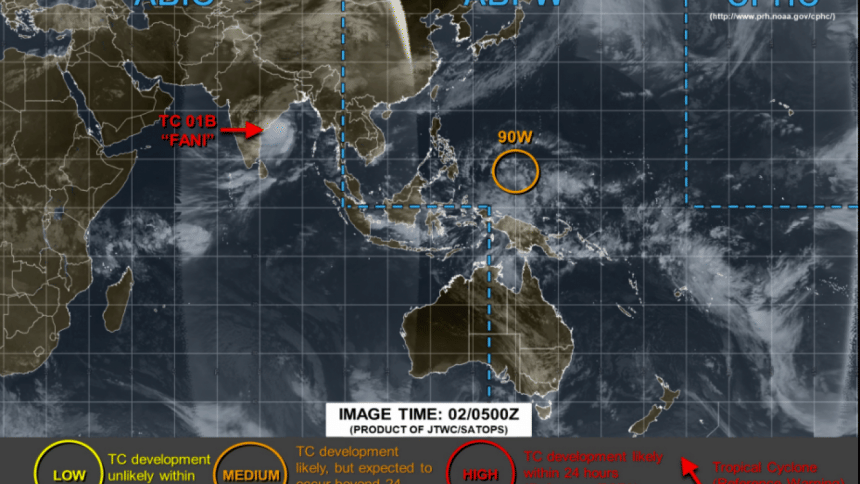Why the cyclone called ‘Fani’

The name of the tropical cyclone “Fani”, which has now turned into an extremely severe cyclonic storm, was given by Bangladesh. The Bangla word “Fani” means snake.
The cyclone originated from a tropical depression which formed near west of Sumatra in the Indian Ocean on April 26, according to the Joint Typhoon Warning Center (JTWC).
It is most likely to reach Bangladesh’s coastal areas tomorrow with wind speed up to 180kmph.
So, how is it that the cyclone originated in the North Indian Ocean region was named by Bangladesh and not by Sri Lanka or Thailand? And who decides who should give names to cyclones and why?
WHY
According to Hurricane Research Division, tropical cyclones are named to provide ease of communication between forecasters and the general public regarding forecasts, watches, and warnings. A name helps people and the media to identify each cyclone and become more aware of its implications.
As the storms can often last a week or longer and more than one can occur in the same basin at the same time, names can reduce the confusion about which storm is being referred to.

The North Indian Ocean region tropical cyclones have been named since 2006. Bangladesh falls in this region. The Southwest Indian Ocean tropical cyclones were first named during 1960-61.
HOW
Earlier storms were named arbitrarily. Such as, an Atlantic storm that ripped off the mast of a boat named Antje became known as Antje's hurricane, according to the World Meteorological Department.
But meteorologists, in the pursuit of a more organised and efficient naming system, decided to identify storms using names given by a list of countries arranged alphabetically.
Eight countries in the North Indian Ocean region - Bangladesh, India, Maldives, Myanmar, Oman, Pakistan, Sri Lanka and Thailand - have contributed to the list.
They came up with a list of 64 names - eight names from each country - for upcoming cyclones.
The given names are preordered on the list and used serially whenever a cyclone occurs.
The last country in the list is Sri Lanka. The last cyclone to take place in the North Indian Ocean region was called “Phethai”, a name given by Sri Lanka. That’s why it is now the turn of Bangladesh to name the storm as the first country in the list that was constructed alphabetically.
The World Meteorological Organization (WMO), a Geneva-based agency of the United Nations (UN), maintains the lists of the given names.
The Bangladesh Meteorological Department (BMD) also has the list of names contributed by these countries for cyclones that form over the Arabian Sea and Bay of Bengal. Every time a cyclone forms, a name is picked in order of submission by these countries.
Onil, Ogni, Nisha, Giri, Chapala, Ockhi and Fani are the cyclone names given by Bangladesh.
The Indian names include Agni, Akash, Bijli, Jal, Lehar, Megh, Sagar and Vayu while Hibaru, Gonu, Keila, Madi, Roanu, Mekunu and Hikaa are named by Maldives.
Pyarr, Yemyin, Phyan, Thane, Nanauk, Kyant, Daye and Kyarr are all Myanmarese names while Fanoos, Laila, Nilam, Vardah, Titli and Bulbul are Pakistani names.
Cyclone “Mora”which hit Bangladesh in 2017 was named by Thailand. “Mora” is a Thai word, which means “star of the sea” or “sea star”.
Cyclonic storm “Roanu” that hit Bangladesh in May 2016 was named by Maldives. The Maldivian word means “coir rope”.

 For all latest news, follow The Daily Star's Google News channel.
For all latest news, follow The Daily Star's Google News channel. 



Comments